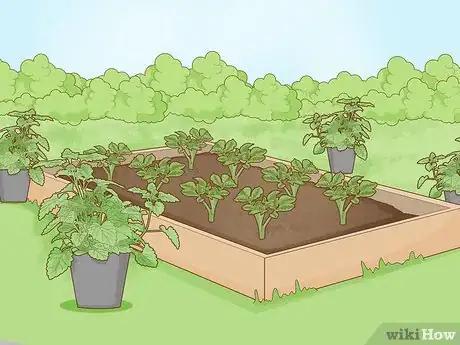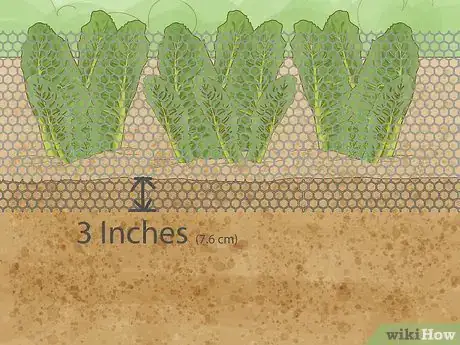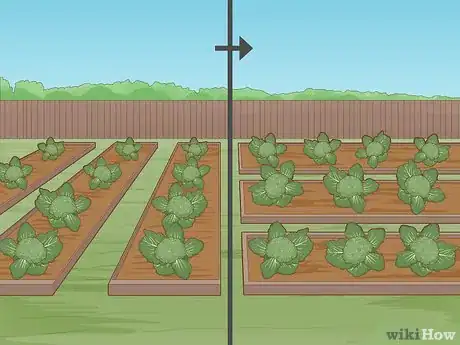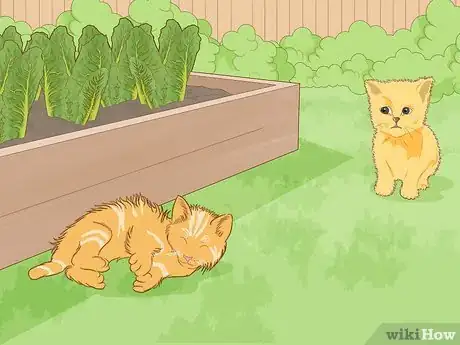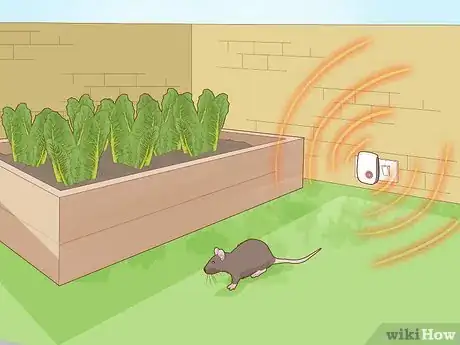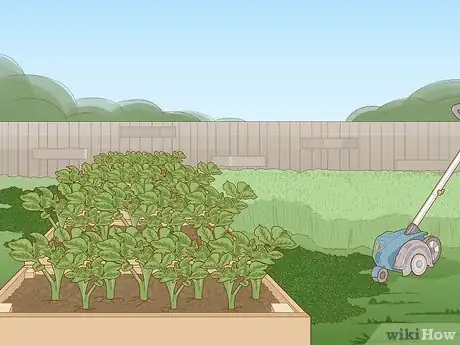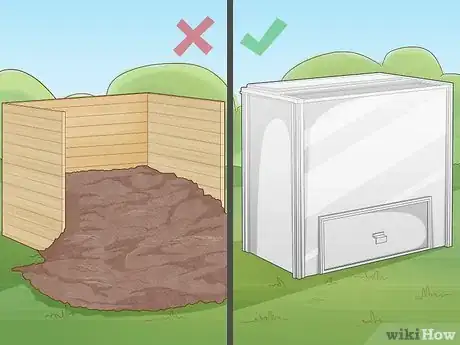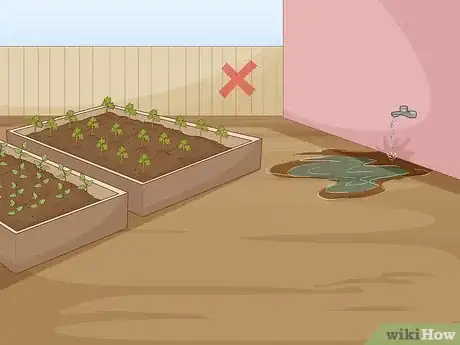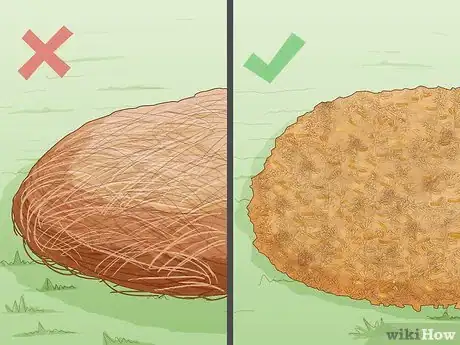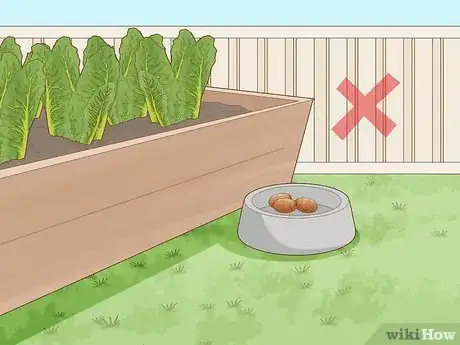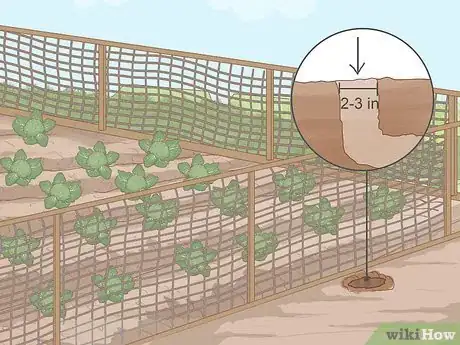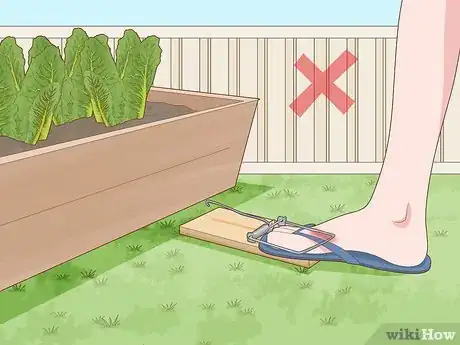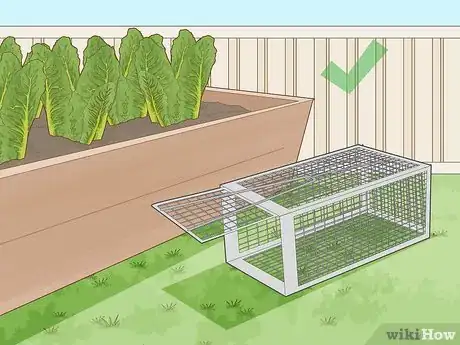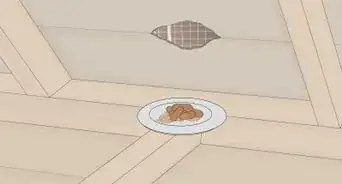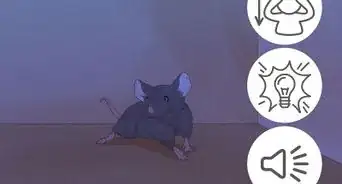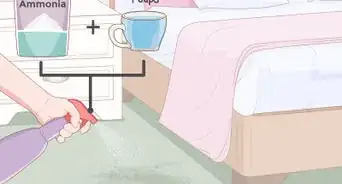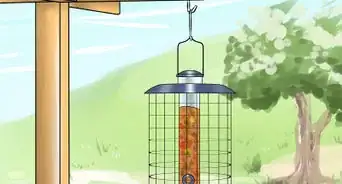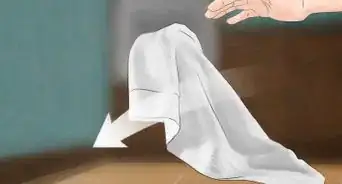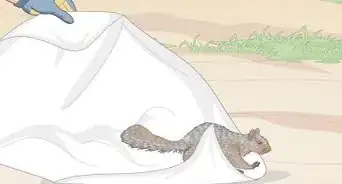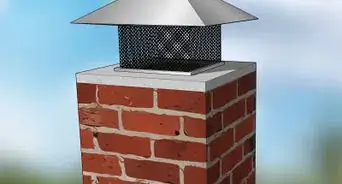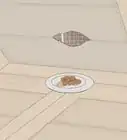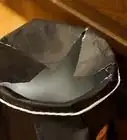This article was co-authored by Hussam Bin Break and by wikiHow staff writer, Christopher M. Osborne, PhD. Hussam Bin Break is a Certified Commercial Pesticide Applicator and Operations Manager. He and his brother Hussam co-founded Diagno Pest Control in the greater Philadelphia area in 2018, and have since expanded their services to include the New Jersey market. Diagno Pest Control has received Home Advisor's Top Rated and Elite Service Badges for quality of work and customer service.
This article has been viewed 37,386 times.
If you have a vegetable garden, you can be sure that garden pests will come to sample your tasty produce! Rats are frequent garden pests, but there are things you can do to help keep them away. Start by making your garden less rat-friendly by removing hiding spots, standing water, and protein sources. There are also a lot of home remedies you can try that can help deter rats from your garden.
Steps
Using Home Remedies
-
1Apply peppermint oil or homemade pepper spray to the area. Soak cotton balls in pure peppermint oil and scatter them around your garden. Replace the balls every 2-3 days or after it rains. Alternatively, use hot pepper flakes, water, and dish soap to make your own pepper spray, put it in a spray bottle, and spray it around your garden on the same schedule.[1]
- Some gardeners and homeowners swear by peppermint oil as a rat repellent, but there’s no hard evidence to support this. There is decent evidence that pepper spray repels animals like rabbits and deer, but less so regarding its effectiveness against rats.
-
2Grow catnip or other mint varieties in your vegetable garden. Despite a lack of solid proof, catnip’s scent—or the scent of any mint variety—may repel rats. All members of the mint family, including catnip, are very easy to grow. Mint grows so aggressively that you may want to plant it in pots and place them in various spots throughout your veggie garden.[2]
- Catnip’s flowers attract bees, which benefit your veggie garden, and its leaves can be harvested and used to make a soothing herbal tea.
Advertisement -
3Plant a perimeter of pungent herbs and veggies around your garden. Any strong-scented vegetable (like onions or garlic) or herb (like basil or thyme) that you can think of has probably been claimed by someone as a rodent repellent. The evidence is limited at best, but try planting several of these pungent options all around the outer edge of your veggie garden. It’s worth a try![3]
-
4Set up metal border fencing with very small openings. Rats can squeeze through openings the size of a U.S. quarter—roughly 1 in (2.5 cm) in diameter—so use wire fencing with openings smaller than this. Choose metal rather than plastic or wood fencing, as rats can and will chew through these materials.[4]
- Rats may be able to climb over the fence, so choose a fence that is at least 1 ft (30 cm) high. They can also tunnel beneath fences, so bury it at least 3 in (7.6 cm) underground.
- Make sure there are no gaps in the fencing the entire way around your garden. If there’s a gap, rats will find it![5]
- Even the best fencing setup may not be able to stop rats completely. They are crafty and determined creatures.
-
5Rearrange your garden layout regularly to “bother” the rats. There’s some evidence that rats are “neophobic”—in other words, that they dislike new, different, or unfamiliar things. Supposedly, if you rearrange your veggie garden regularly, you may annoy the rats enough that they’ll head elsewhere![6]
- If you have potted plants and pieces of garden decor, for example, you might move them around the garden every month or so during the growing season.
-
6Let your pet dog or cat patrol the area for you. If your veggie garden is in a secure area where your dog or cat can patrol safely, let them help you keep rats away. Their presence (and especially their scent) may help keep rats away in the first place, and they may catch a few rats as well![7]
- However, catching rats may expose your pet to illnesses or infections. Even worse, if your pet catches a rat that has recently eaten poison, it may be poisoned as well.
- If your garden creates an otherwise welcoming rat environment, the regular appearance of a dog or cat probably won’t be enough to keep the rats away.
- Your pet might also cause damage to your veggie garden on its own!
-
7Try sonic rodent repellers as a potential temporary measure. Sonic repellers produce a high-frequency sound that supposedly drives rats and other rodents away. These repellers may work as a short-term measure, but rats are likely to “get used to” the noise and return before long.[8]
- Look for a plug-in, battery-powered, or solar-powered sonic rodent repellers online or at home improvement stores. Keep in mind, though, that there’s no solid evidence that they work.
Making Your Garden Less Attractive to Rats
-
1Clear away low-lying brush, high weeds, and other hiding spots. Rats prefer to remain hidden from view, so get rid of all the potential hiding and nesting spots you can. Keep the surrounding lawn well-trimmed, pull weeds regularly, and trim away or remove any ground cover plantings. Also remove any piles of wood, stone, or other materials.[9]
- Basically, keep your vegetable garden as uncluttered as possible. Grow the veggies you want and cut back on decorative-only plantings and other unnecessary stuff.
-
2Secure compost in a sturdy plastic or metal compost bin. Compost piles provide food, warmth, and nesting material for rats. Store your compost in a drum-style container with a secure lid so rats can’t access it. Additionally, if you put food scraps in your compost, use only fruit and veggie scraps, not meats, grains, oils, or fats.[10]
- Rats are omnivores that require protein and fat sources. If they can’t find these near your veggie garden, they’ll probably move elsewhere.
-
3Get rid of standing water, dripping pipes, and other water sources. Your veggie garden obviously needs water, but you don’t need to leave standing water in the area. Level off any spots where water ponds during rainstorms, keep buckets, watering cans, and other water-collecting vessels covered or overturned and repair any leaks in your water spigot or hose.[11]
- Don’t, for instance, keep a birdbath near your veggie garden.
- In addition to rats, standing water may also bring mosquitoes to your garden.
-
4Reduce or eliminate your use of garden mulch. While a thick layer of mulch can help limit the number of weeds that sprout up in your garden, it also provides concealment and nesting material for rats and other rodents. And more weeds but fewer rats sounds like a fair trade![12]
- If you insist on mulching, use a thin layer of dense wood chips, not a fluffy straw material. Or, use gravel as a mulching material.
-
5Harvest your veggies often so they don’t fall on the ground. Any fruits, vegetables, nuts, or seeds that fall onto the ground serve as an easy food source for rats. Harvesting frequently—perhaps even 1-2 times daily, depending on the situation—can greatly reduce the amount of rat food that reaches the ground.[13]
- Also, whenever you do harvest or otherwise tend to your garden, pick up anything that has already fallen to the ground.
- Use harvesting guides that are specific to the veggies you’re growing and your climate zone.
-
6Keep all other potential rat food sources out of the area. You can’t get rid of your vegetable plants if you want to have a veggie garden, but you can get rid of as many other potential rat food sources as possible.[14] These include, but aren’t limited to:[15]
- Birdseed or other wild animal food is especially scattered on the ground. Use bird feeders and move them away from your veggie garden.
- Bagged, served, or uneaten pet food. Move this out of the area and clean up spills and uneaten food as soon as possible.
- Household trash. Use a sturdy trash can with a secure lid and keep it out of the area of your garden.
- Pet droppings. Yes, rats will sometimes snack on dog poop!
Dealing with an Infestation
-
1Look for tunnel holes, droppings, “rat runs,” and other infestation signs. Rats are nocturnal, so you usually won’t see one unless it’s desperate for food. If you do see one, however, assume that there are more—and maybe many more—around as well. Keep an eye out for signs of infestation like the following:[16]
- Round holes in the soil about 2–3 in (5.1–7.6 cm) in diameter. These are the entry holes to the rats’ tunnels, which can extend for several feet/meters.
- Cylindrical droppings about 0.5 in (1.3 cm) long.
- Greasy markings along walls, curbs, or garden borders. Rats leave scent markers along straight pathways against walls and similar structures—these pathways are called “rat runs.”
-
2Contact a pest control professional to manage an infestation. Rats reproduce rapidly, making infestations difficult for the average homeowner to manage. If you see signs of significant rat activity, your best option is to contact a licensed and experienced pest control company.[17] [18]
- Licensed pest control professionals can use poisons and traps that may not be accessible to you and have the knowledge to use them safely. They also have expertise in placing deterrents effectively and safely, as well as in making your garden less hospitable to rats.
-
3Avoid putting out unprotected snap traps or poison yourself. While you can buy them at home centers and online, both rat-sized snap traps and rodent poison blocks carry risks when used unsafely. Unsecured poison blocks are a serious hazard to wildlife, pets, and kids. Similarly, pets and kids can be seriously injured by rat traps, which are larger and have a more powerful “snap” than mouse traps.[19]
- If the poison or trap is accessible to anything larger than a rat, don’t use it.
- It may be illegal to put out rodent poison, even in an enclosed bait station, where you live.
-
4Use covered traps instead of covered poison if you have pets or kids. If you do choose to manage the infestation yourself with traps or poison, use only versions that are fully enclosed in kid- and pet-resistant containers. And, especially if there are kids or pets around, opt for enclosed traps instead of poison as an added safety measure.[20]
- Don’t try to make safety enclosures yourself. Instead, buy traps or poison blocks that come pre-enclosed in secure containers. Look for them at home centers or online.
References
- ↑ https://www.bhg.com.au/how-to-get-rid-of-rats-in-your-garden
- ↑ https://www.bhg.com.au/how-to-get-rid-of-rats-in-your-garden
- ↑ https://www.almanac.com/pest/mice
- ↑ https://www.bhg.com.au/how-to-get-rid-of-rats-in-your-garden
- ↑ Hussam Bin Break. Pest Control Professional. Expert Interview. 28 June 2019.
- ↑ https://www.gardenersworld.com/plants/rats-in-the-garden/
- ↑ https://www.bbg.org/gardening/article/managing_rats_in_city_gardens
- ↑ https://www.almanac.com/pest/mice
- ↑ https://www.gardenersworld.com/plants/rats-in-the-garden/
- ↑ https://www.bbg.org/gardening/article/managing_rats_in_city_gardens
- ↑ https://www.bbg.org/gardening/article/managing_rats_in_city_gardens
- ↑ https://www.almanac.com/pest/mice
- ↑ https://www.bbg.org/gardening/article/managing_rats_in_city_gardens
- ↑ Hussam Bin Break. Pest Control Professional. Expert Interview. 28 June 2019.
- ↑ https://www.bbg.org/gardening/article/managing_rats_in_city_gardens
- ↑ https://www.gardenersworld.com/plants/rats-in-the-garden/
- ↑ Hussam Bin Break. Pest Control Professional. Expert Interview. 28 June 2019.
- ↑ https://www.gardenersworld.com/plants/rats-in-the-garden/
- ↑ https://www.bbg.org/gardening/article/managing_rats_in_city_gardens
- ↑ https://www.gardenersworld.com/plants/rats-in-the-garden/

